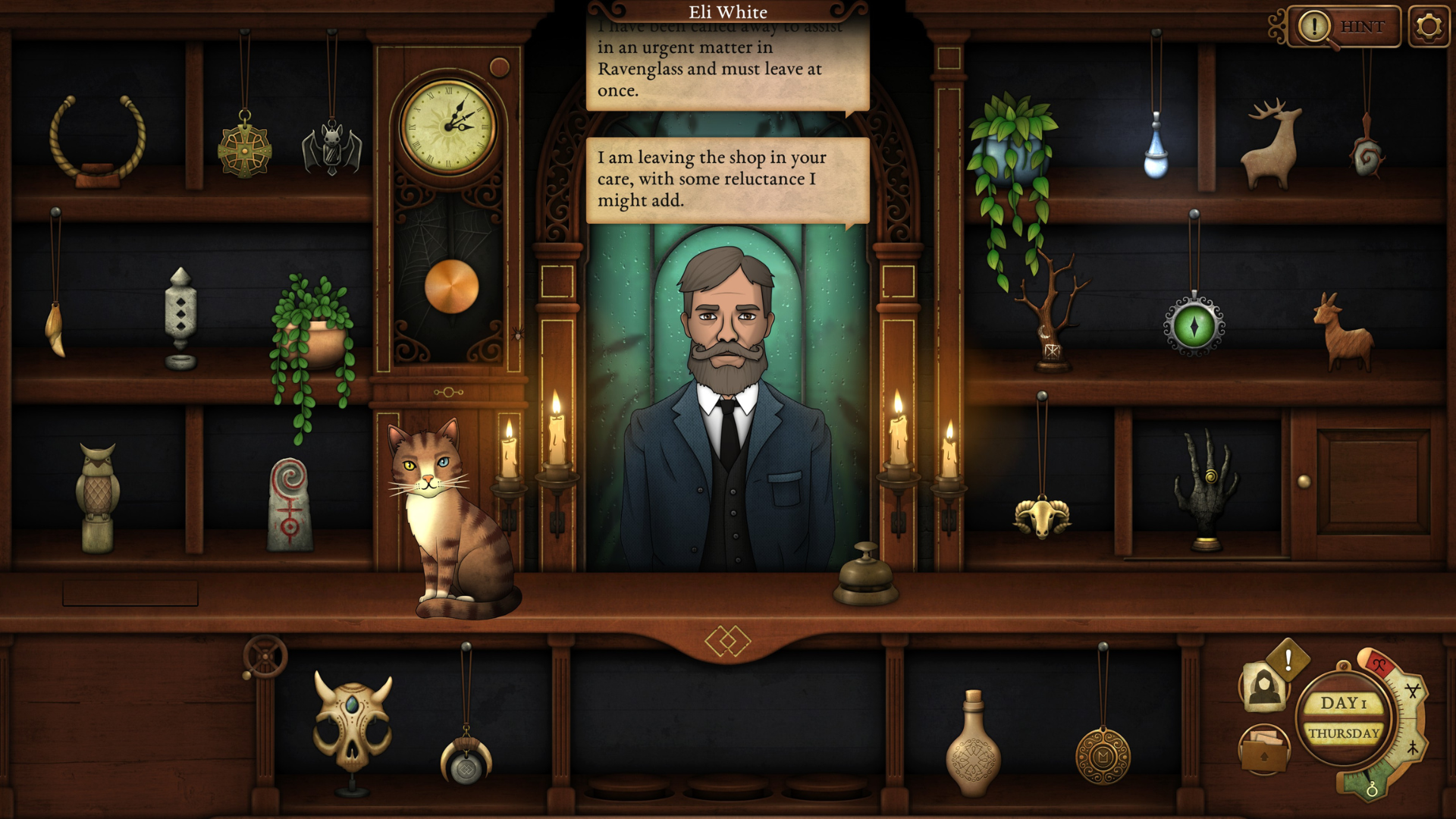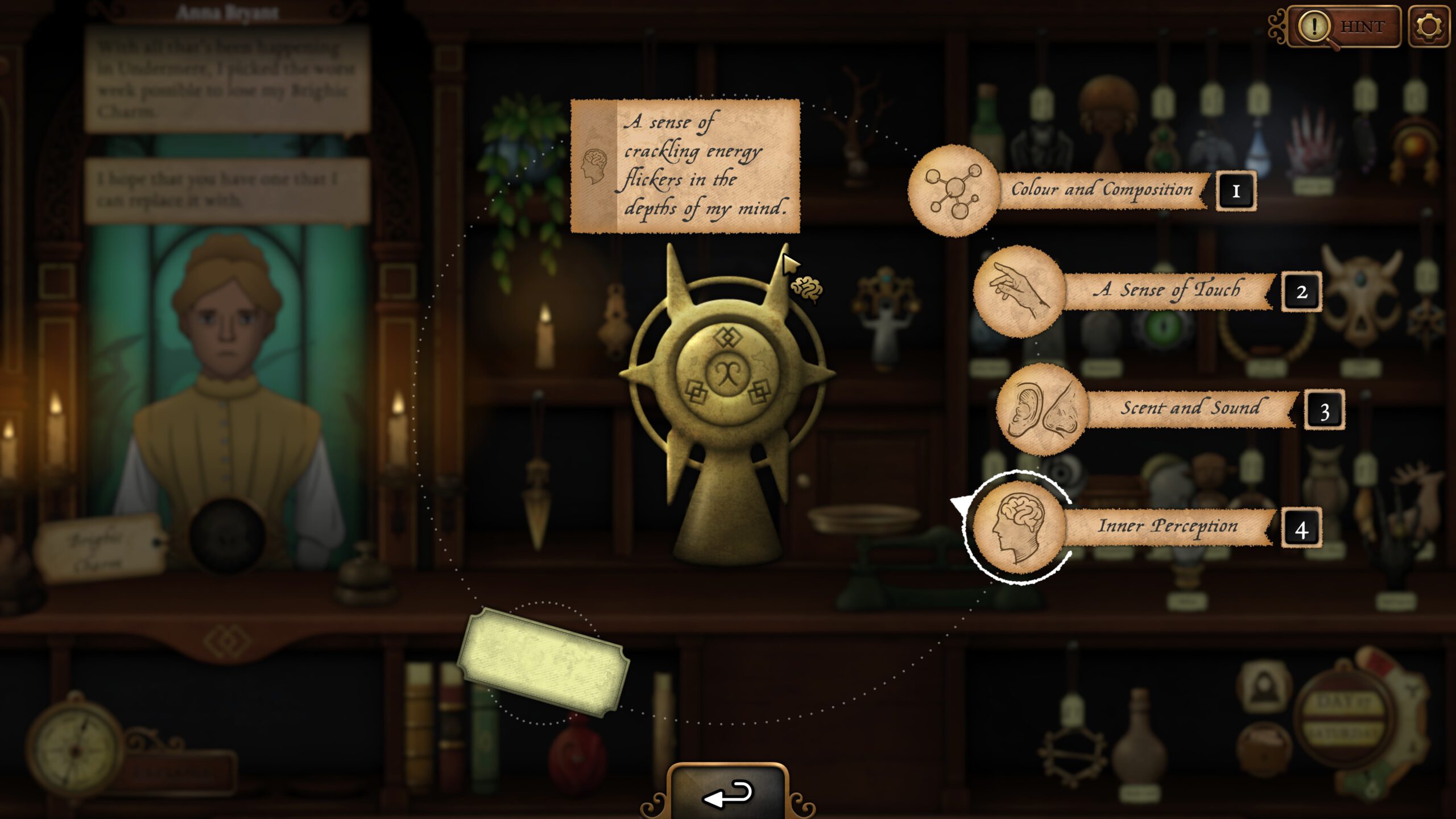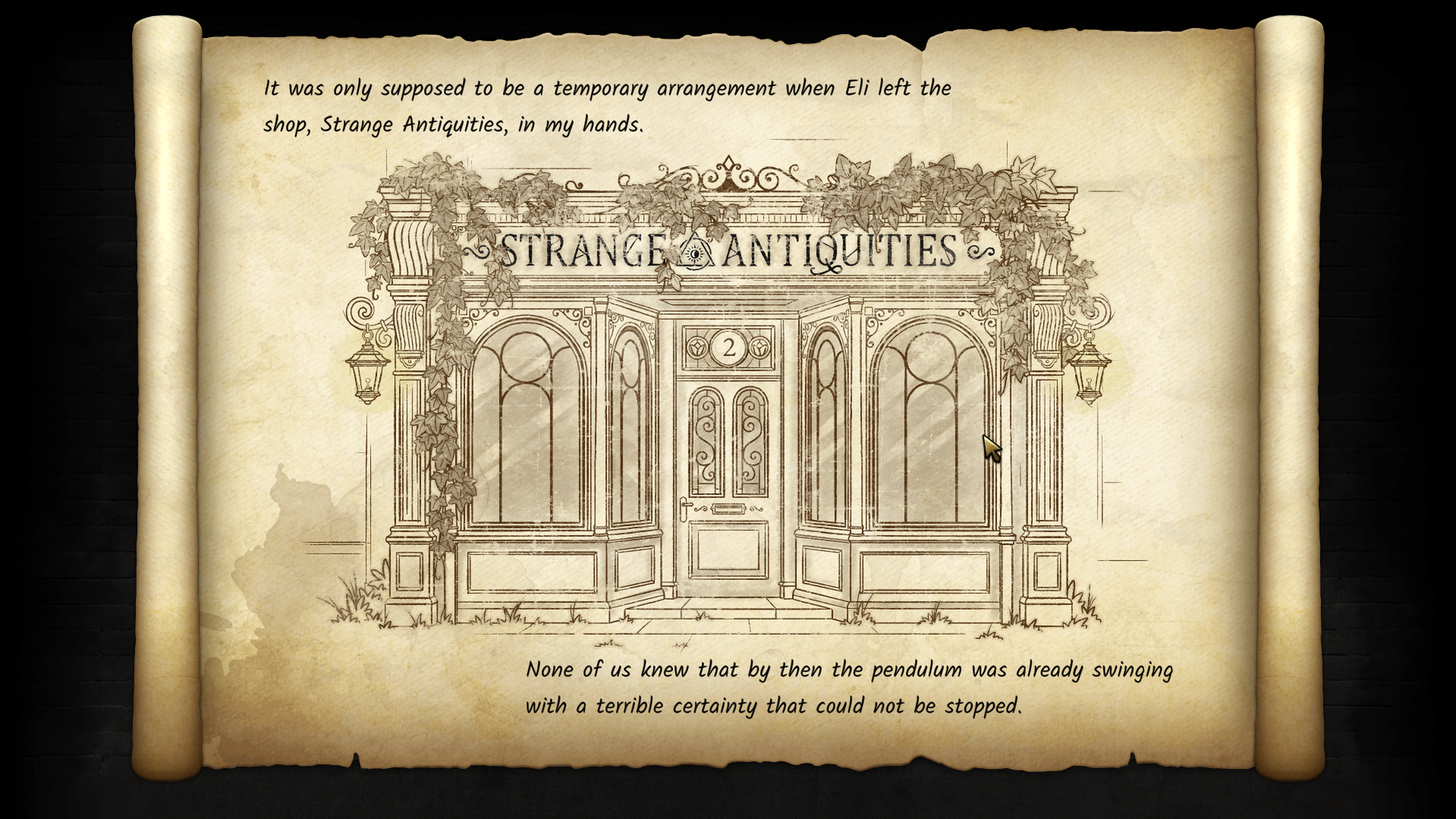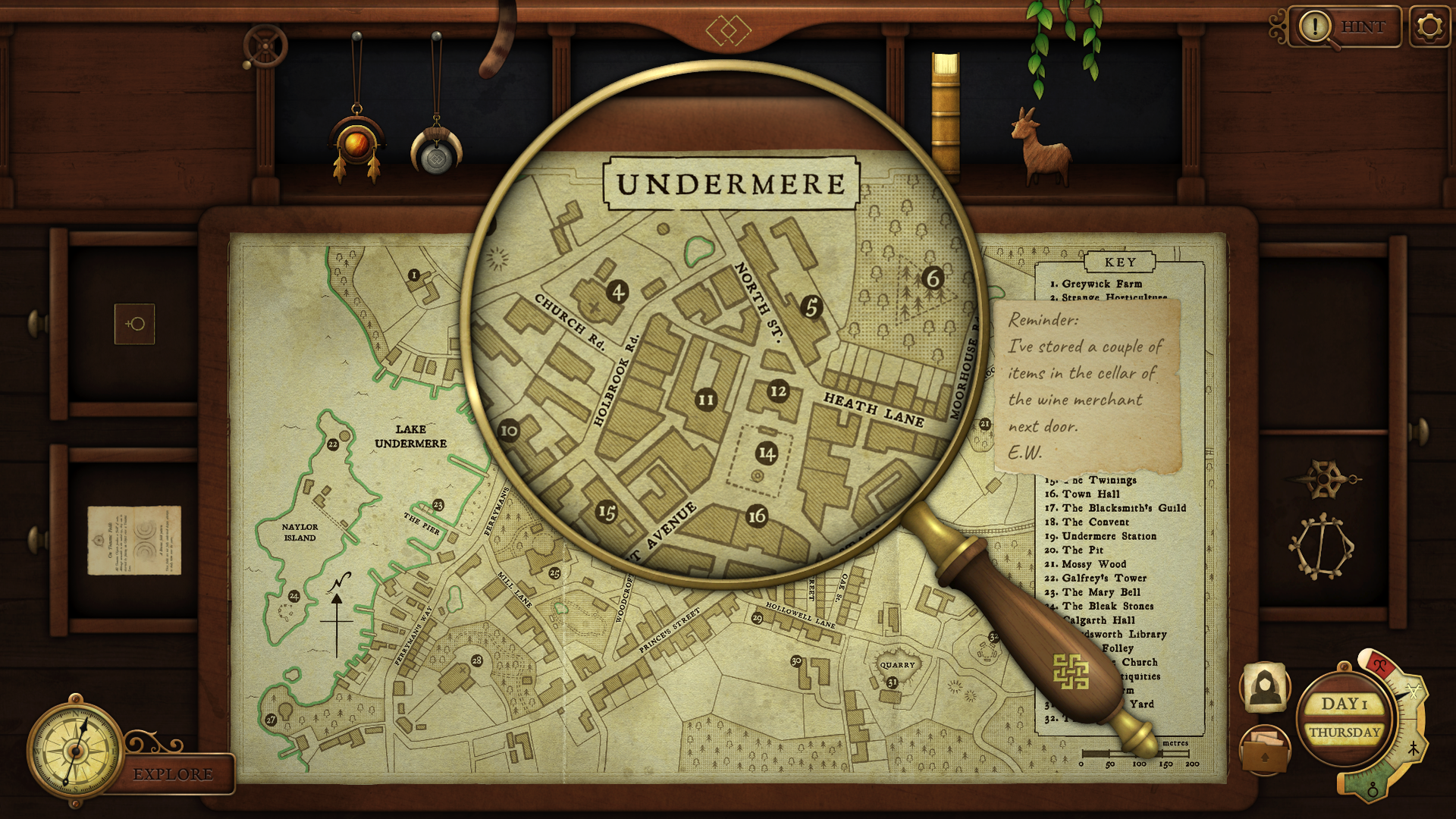When Strange Horticulture first appeared on the indie‑gaming radar, it arrived like a whispered secret in a dusty library—unexpected, enchanting, and utterly addictive from the opening page. I found myself glued to the screen, deciphering botanical riddles. By the time the final leaf fell, I was left yearning for a fresh mystery that could capture the same blend of cozy charm and unsettling intrigue.
Enter Strange Antiquities, Iceberg Interactive’s eagerly anticipated follow‑up. The moment I saw the trailer—a dimly lit shopfront nestled in the ever‑glowering town of Undermere—I sensed that the developers had listened to the community’s cravings. The promise was clear: retain the slow‑burn puzzle pleasure of Horticulture while deepening the world‑building, adding new mechanics, and dialing up the atmospheric creep factor.

A Lovecraftian Tale of Curiosities and Community
The narrative of Strange Antiquities treads the thin line between a quaint shopkeeper’s diary and a cosmic horror novella. We return to Undermere, a town that seems perpetually caught in twilight, where fog rolls off the river like a living breath. This time, however, we aren’t tending to bizarre plants; we’re curating an eclectic shop of relics, talismans, and cursed artifacts. Each customer arrives with a request—a missing heirloom, a forgotten rune, an obscure amulet—providing a portal into their personal stories and, by extension, the town’s hidden history.
What makes the storytelling stand out is its branching intimacy. The items we hand over don’t merely satisfy a checklist; they shape relationships. Give a patron a cursed locket and you’ll later witness their descent into paranoia. These micro‑narratives intertwine with an overarching plot that hints at a larger, eldritch threat seeping through Undermere’s cobblestone streets. Moments when the shop’s warm glow flickers against a distant scream or a sudden gust of cold wind rustles the pages of an ancient tome feel pulled straight from the pages of H.P. Lovecraft or Edgar Allan Poe, delivering a more“cozy spooky” vibe I adore.
The pacing respects the leisurely rhythm of a shop‑keeper’s day: sunrise brings new customers, midday offers a lull for research, and twilight ushers in the city‑wide investigations. The story never feels rushed, allowing players to savor each revelation. By the final act, the threads of personal tales, the town’s creeping darkness, and the mysteries of the artifacts converge in a satisfying crescendo that feels earned rather than forced.

Refined Puzzles, Sanity‑Testing Risks, and Detective‑Style Exploration
If Strange Horticulture taught us to decode cryptic notes and match botanical clues, Strange Antiquities evolves that mechanic into a more layered, yet intuitively approachable system. At the heart of each day lies the counter, where customers present cryptic requests. The player consults a suite of reference books—The Compendium of Antiquities, Symbolic Lexicon, Gemstone Almanac, and Curses & Blessings—to match descriptors with items stored in the shop. Successful matches reward you with pages of lore that unlock new artifacts or provide hints for future quests. The satisfaction of sliding a correctly identified relic onto the counter, hearing the soft chime of approval, and watching the parchment unfurl is a tactile pleasure that feels both rewarding and thematically resonant.
Mistakes bear weight. After a few failed identifications, the sanity meter ticks upward, ushering you into a dice‑based mini‑game that simulates the fraying of your mind. Winning the dice game restores balance and lets you return to the shop, while a loss plunges you into a short “madness” sequence. This risk‑reward loop injects tension without feeling punitive, reminding players that the world is as fragile as the artifacts they handle.

Beyond the shop, each sunrise presents a clue card that points to a location on one of several hand‑drawn maps of Undermere. Decoding these clues feels like stepping into the shoes of a Victorian detective. When you locate the correct site—be it an abandoned lighthouse, a subterranean crypt, or a forgotten market stall—you recover new objects and lore. Conversely, wandering astray raises your sanity meter, nudging you closer to that dice encounter. The maps themselves are beautifully illustrated, and the act of pinning a card onto the correct spot provides a rewarding visual cue that reinforces the sense of progress.
These three pillars—shop puzzles, sanity management, and field investigation—interlock seamlessly. The game never forces you to abandon one for the other; instead, it encourages a natural rhythm: serve customers, research, venture out, return with artifacts, and repeat. This loop feels polished and addictive, with each day presenting fresh challenges that are hard enough to feel meaningful yet never so opaque that frustration sets in.

Polished Atmosphere and Seamless Interface
Visually, Strange Antiquities retains the hand‑drawn, sepia‑tinged aesthetic of its predecessor, but the engine upgrades have refined texture fidelity and animation smoothness. The shop’s interior exudes a warm, amber‑lit glow, contrasted sharply with the muted, mist‑filled streets of Undermere. When you flip through reference books, pages turn with a soft rustle, and the occasional flicker of candlelight adds to the immersion.
A low, resonant hum underpins the shop, punctuated by the occasional creak of wooden floorboards and the distant clang of a bell tower. Each artifact carries its own subtle audio signature—a faint whisper from a cursed mirror, a metallic tinkle from a silver chalice—providing organic clues without resorting to intrusive narration. The ambient soundtrack swells gently during exploration, employing low strings and eerie woodwinds that evoke both curiosity and unease.
The UI has been streamlined compared to Horticulture. Switching between the counter view, the reference library, and the city maps is almost instantaneous, with fluid transitions that keep you anchored in the world rather than pulling you out of it. Animations for card placement and artifact discovery feel satisfying and purposeful, giving a small dopamine hit each time you successfully add a new relic to your collection.
Conclusion
Strange Antiquities is exactly what fans hoped for—a sequel that respects its roots while boldly expanding the experience. Iceberg Interactive has taken the core formula that made Strange Horticulture a hidden gem and refined it with richer narrative depth, tighter gameplay loops, and an even more evocative atmosphere. The game’s puzzles strike a perfect balance between challenge and accessibility, its sanity mechanic adds a thrilling edge without feeling unfair, and the detective‑style city exploration injects fresh variety into each play session.
If you were enchanted by the quiet intensity of Strange Horticulture, you will find Strange Antiquities to be a no‑brainer. It delivers more of everything that made the original great—cozy dread, clever clue‑hunting, and a world that feels alive with secrets—while introducing just enough new ingredients to keep the experience feeling fresh. In the crowded indie market, it’s a rare example of a sequel that not only matches its predecessor but surpasses it, solidifying its place as a must‑play for anyone who loves atmospheric puzzle games with a spooky twist.

Leave a Reply